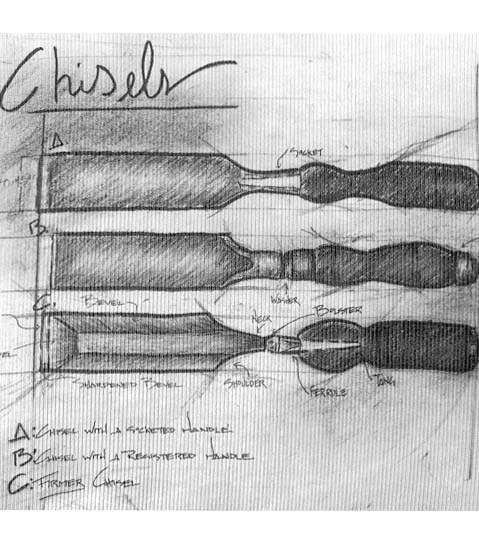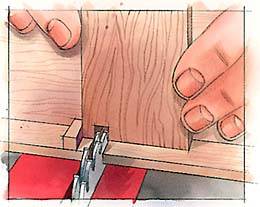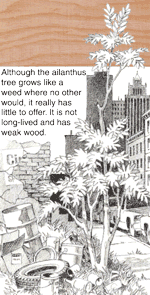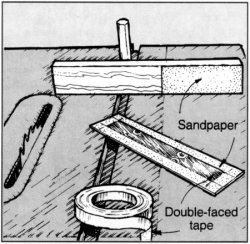SPLINTERS
Tennessee Valley Woodworkers
 Vol. 17/ Issue1
January 2002
Editor: Tom Gillard Jr.
Vol. 17/ Issue1
January 2002
Editor: Tom Gillard Jr. 

Meeting Notice:
The next meeting of the TN Valley Woodworkers
Will be held, January 15th at 7:00 p.m. in the
Duck River Electric Building, Decherd, TN
All interested woodworkers are invited!


The following people have agreed to serve as contacts for their particular
skills. If you have questions, suggestions
for activities, or other comments relating to these skills, please
call these folks. Their interest is to help the
club better serve their area of expertise. Your participation
with them will help them achieve that goal.
Alice Berry
454-3815 Design
Phil Bishop
967-4626 Finishing
Tom Church 967-4460
Turning
Harry May
962-0215 Carving
Bob Reese
728-7974 Sharpening
Ross Roepke
455-8310 Jointery
Maurice Ryan 962-1555
Health and Safety

List of
Club Officer
President: Bob Leonard
V. President: Doyle McConnell
Secretary: Barbara Keen
Treasurer: Henry Davis
Publicity: Maurice & Ruth Ryan
Newsletter Editor: Tom Gillard Jr.
GOD BLESS AMERICA!

With the flying of flags comes the problem of what to do with the flags
that become tattered and torn due to use. The proper way of disposing
of these emblems of our Country is to retire them with dignity. This
usually involves burning them. The Boy
Scouts can offer their services if you have a flag that need to be
retired. There are three members of our club that are also members
of the BSA. Danny Bean, Steven Savelle, and Tom Gillard. Please
bring your flag to one of us if needed. Thanks
On behalf of the club I’d like to thank everyone that has helped this
club be so successful this past year. Without your help we wouldn’t
have had such a productive year. Lets do it again this year!
January meeting Program
David Duggin will make a presentation on recognizing and restoring "Tennessee
Furniture". David lives in Woodbury's oldest house and is a dealer of high
end period antiques.
Making Box Joints
Before the advent of cardboard boxes, manufacturers joined the sides
of thin wooden boxes with these joints because they were strong and fast
to make. Today, box joints have taken on practical and decorative roles
in projects ranging from jewelry cases to hope chests. After you build
the jig featured in the Box-Joint Jig Project, follow these steps and see
firsthand how easily you can master this joinery method.
1. Before you cut the actual box joints, keep in mind that the width
of your box sides must be an increment of the finger width. Otherwise,
you’ll wind up with less-than-pleasing partial fingers at the bottom of
your box. So, in the example of 1/4"-thick stock discussed
here and in the jig-building article, the width of the workpieces
must be an increment of 1/4" (such as 5", 5 1/4", 5 1/2",
etc.).
2. Mark the front, back, and side pieces of your box. Also, mark the
top edge on each of these pieces.
For each box you make, you cut the sides consecutively, and the front
and back consecutively. It doesn't matter which pair you do first, so we'll
start with the sides.

For all of the following cuts, hold the top edge of the workpiece toward
the jig pin for the first cut. Now, put hand pressure on the jig to hold
its miter-gauge bar firmly against the right side of the tablesaw channel.
Make the first cut as shown above. Place the just-cut notch over the jib
pin and repeat to cut fingers along the full width of the workpiece. Cut
the other side piece in the same fashion.

3. Before you cut the front and back, cut one notch into a scrap piece,
just as you cut the first notch into the side piece earlier. Position this
notch over the pin as shown at left, and butt the top edge of the front
piece against the scrap before making a cut.
Make the remaining cuts in the front piece by removing the scrap, placing
the notch over the pin, and proceeding as described earlier. Cut the back
piece just as you cut the front.

4. To join your box pieces, apply glue to all of the mating surfaces
with a small brush. Tap the joints together with a rubber mallet if necessary.
Clamp the box together as shown above. (You may need to position a clamp
diagonally to square the box.)
Note that we used scrap pieces on each side of the corners to evenly
distribute the clamping pressure along the joint. Wider boxes may require
additional clamps.
After the glue dries, sand the fingers flush with the sides, front,
and back. Be careful not to round over the corners.
Eagan, Minnesota is south of Minneapolis and St. Paul.
Eagan just made forest
archaeological history when a drilling operation dug up
a piece of spruce
tree from 300 feet underground. Glaciers buried
this spruce forest way before
there were humans in North America. Scientists estimate
the wood to be
between 50,000 and 2 million years old.
The very interesting part is that the wood examined was
determined to grow at
a rapid rate of "3/8 of an inch in 30 years". The
cold that enveloped the
northland left only weeks of annual growing season.
It is really hard for me to fathom a glacier that dumps
300 feet of soil over a
forest. Experts suggest it was soil donated by the
Lake Superior basin.
Notice from the Treasurer:
DUES are due.
$10 for singles
$15 for families

Ailanthus
The tree that you really don't want to grow

For some unknown reason, the tree that many people call "tree of heaven"
or "paradise tree" after its Chinese local name, was brought to North America
from the Far East in the late 1700s. The bearer must have meant well, for
the ailanthus (Ailanthus altissima) isn't a terrible-looking tree. It grows
straight-to 60' or 80' tall-and quickly.
You'll find it in a wide "natural" range that stretches from the Plains
States to the East Coast and northern Michigan to Florida's panhandle.
In fact, heat or cold doesn't hinder this species much. Nor poor soil.
Nor city smog and smoke. Even dryness won't bother it. And the tree can
survive submergence in salt water. So, there's little to stop its propagation
(it spreads by seeds and sprouts from its deep root system). In many places,
the ailanthus has become a real nuisance by aggressively crowding out native
or ornamental species.
So why give this tree a bad rap? For one thing, it stinks. The blossoms
of the male ailanthus produce a stench. The leaves and wood also have a
formidable and unpleasant odor. And, it's not a very convincing shade tree.
Nor does ailanthus live long-maybe 75 years. Lastly, ailanthus wood looks
like white ash, but is weak and brittle.
Ailanthus' only claim to fame is that it is the tree referred to in
the book and motion picture A Tree Grows in Brooklyn. Unfortunately, it
really does.
Tip of the Day
Miter nice
The slick metal surface of a miter gauge often is the culprit when wood
slides into the tablesaw blade.
TIP: To prevent wood from sliding, use double-faced tape to affix medium-
or fine-grit sandpaper to the face of the miter gauge of any power tool.
You can easily replace the tape and sandpaper when necessary.
—Bill Roberts, Angola, Ind.
Visitors at the December meeting:
Don Miller: Manchester
Lowell Johnson: Tullahoma
New Member:
David Jones: Manchester
-------------------------------------------------------------------------------
***************************************
"Briggs Paint on Atlantic street in Tullahoma will be carrying natural
color Deft Oil in gallon ($22.50) and Quart ($7.99) sizes as a test marketing
project. They should have it on the shelf before the end of January.
They will continue to carry it, if there is a demonstrated demand,
and maybe expand to carry the colors as well. See Jeff at the store
for questions or comments."
********************************

WEB
SITES of INTEREST
Arrowmont
School of Arts and Craft
WOOD
ONLINE newsletter
Falls Mill
Appalachain
Center for the Arts
Forest
Products Lab. 1999 Wood Handbook
Highland Hardware
Woodworker's
Journal
WOOD
Online TVWW page
Kevin's Woodturnings
The Oldham Company
The Woodworker's Choice
Russell Brown's Web Page


Saw Blade Sharpening Services: Branching Out is now offering their
services as a drop off spot to have your saw blades sharpened. The
blades will be picked up (Tuesdays), sharpened, and dropped back off at
Branching Out. The Leitz Tooling Systems out of Collierville, TN
will do the sharpening. Call (393-0525) or stop by for details.

 10 % OFF Fine Woodworking
10 % OFF Fine Woodworking
Books from Taunton Press
…We’re open Monday thru Saturday
Webmaster:
Tom Gillard Jr.

 Vol. 17/ Issue1
January 2002
Editor: Tom Gillard Jr.
Vol. 17/ Issue1
January 2002
Editor: Tom Gillard Jr. 
![]()
![]()
![]()









